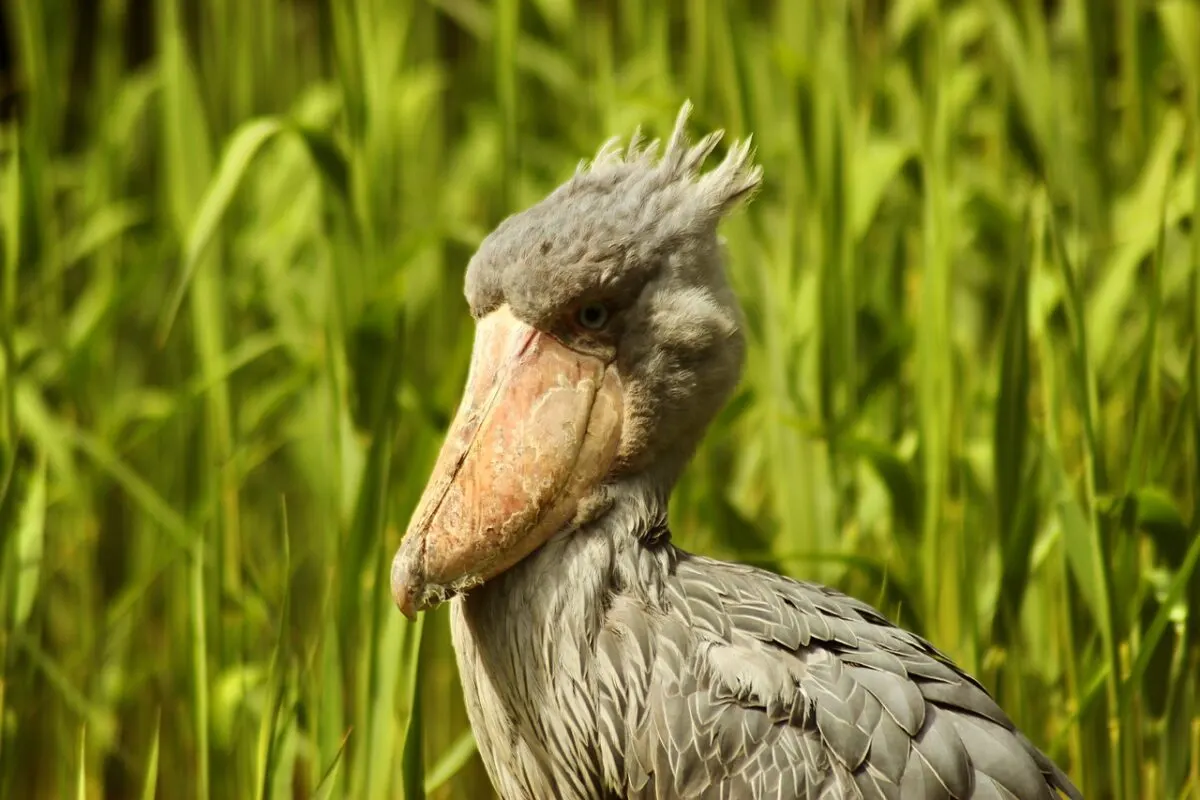This post will tell you all about the shoebill stork, an impressive bird that’s able to kill prey much larger than themselves – they are often seen eating ferocious animals like crocodiles!
Lets have a look together at this incredible wild bird.
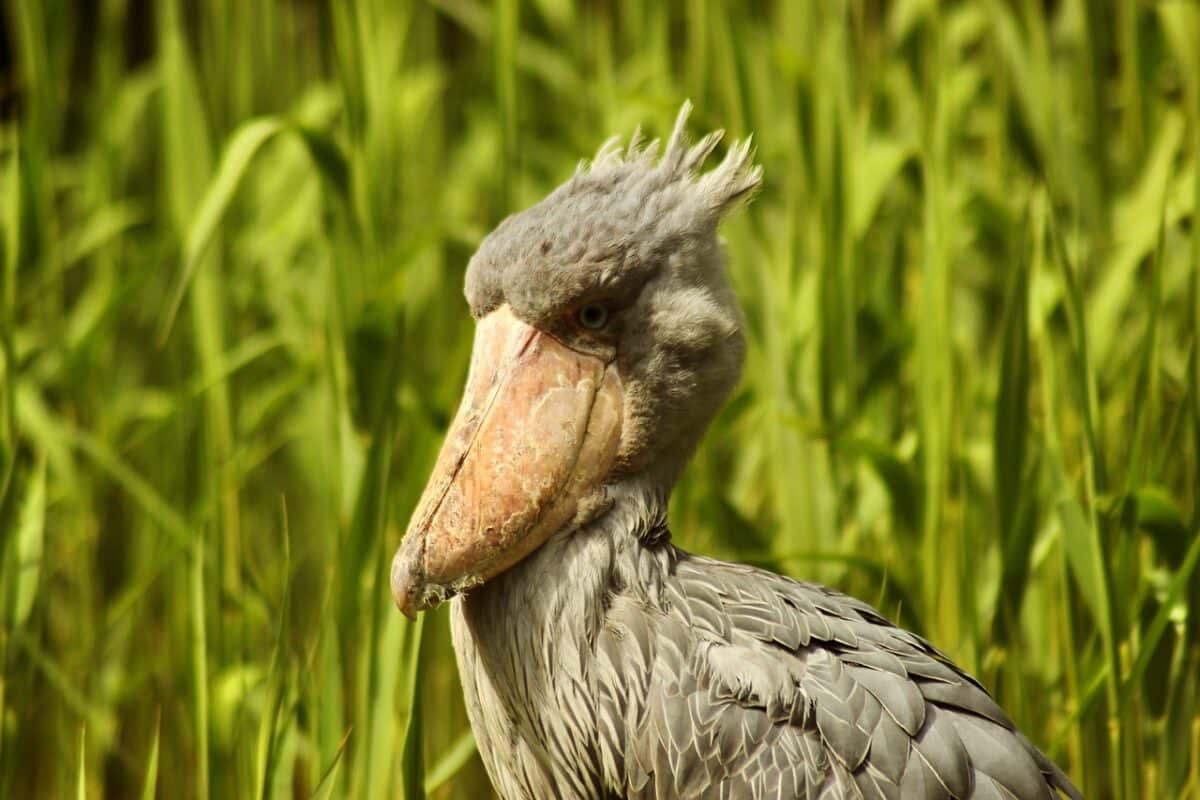
Have you ever seen a shoebill stork ripping apart and eating an entire crocodile? Although it may sound like a scene straight out of a horror film, for these formidable birds, it is simply another snack in their normal diet.
In this post, we’ll look closer at why they are known to be some of nature’s most powerful predators, and how they’re able to take down animals that are so much larger than themselves.
From their impressive hunting techniques to their defining characteristics, let’s explore what makes the shoebill so adept at digesting large reptiles. You won’t believe your eyes!
Introducing the Shoebill Stork
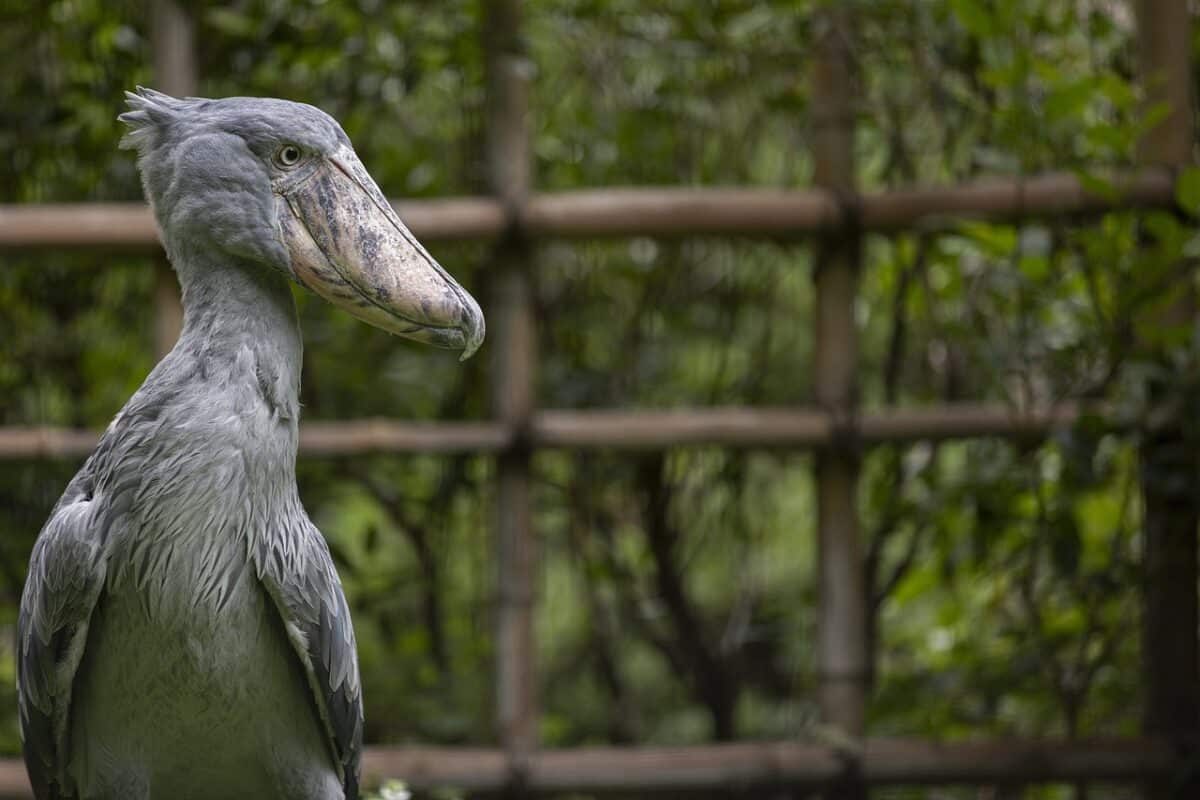
Appearance
The shoebill stork is a large, distinctive bird native to the tropical wetlands of East Africa. They can reach up to 5 feet tall and have broad wings with white and black feathers. Its most striking feature is its long, curved bill that resembles a shoe or boot – hence its name.
Hunting Habits
Shoebill storks are formidable predators often seen hunting for fish and other small creatures in shallow waters. Nonetheless, the shoebill stork is also known to pursue more significant prey, such as monitor lizards, snakes, and juvenile crocodiles. This outrageous sight of a shoebill ripping apart an entire crocodile is something most people don’t believe until they see it.
Behavior
The shoebill stork leads a solitary existence and fiercely defends its territory, especially when safeguarding its nest. While these birds don’t typically migrate, they occasionally wander, searching for food or breeding partners. During courtship displays, male shoebills strut around the female, calling out a loud “whoo-hoop” sound.
Conservation Status
The shoebill stork is considered vulnerable due to habitat reduction. This is mostly caused by human activities such as deforestation, agricultural expansion, mining activities, and water pollution. As such, their population has declined significantly over the past few decades. Conservation efforts need to be taken if these unique birds are going to survive for future generations.
The Shoebill’s Unusual Diet of Large Prey
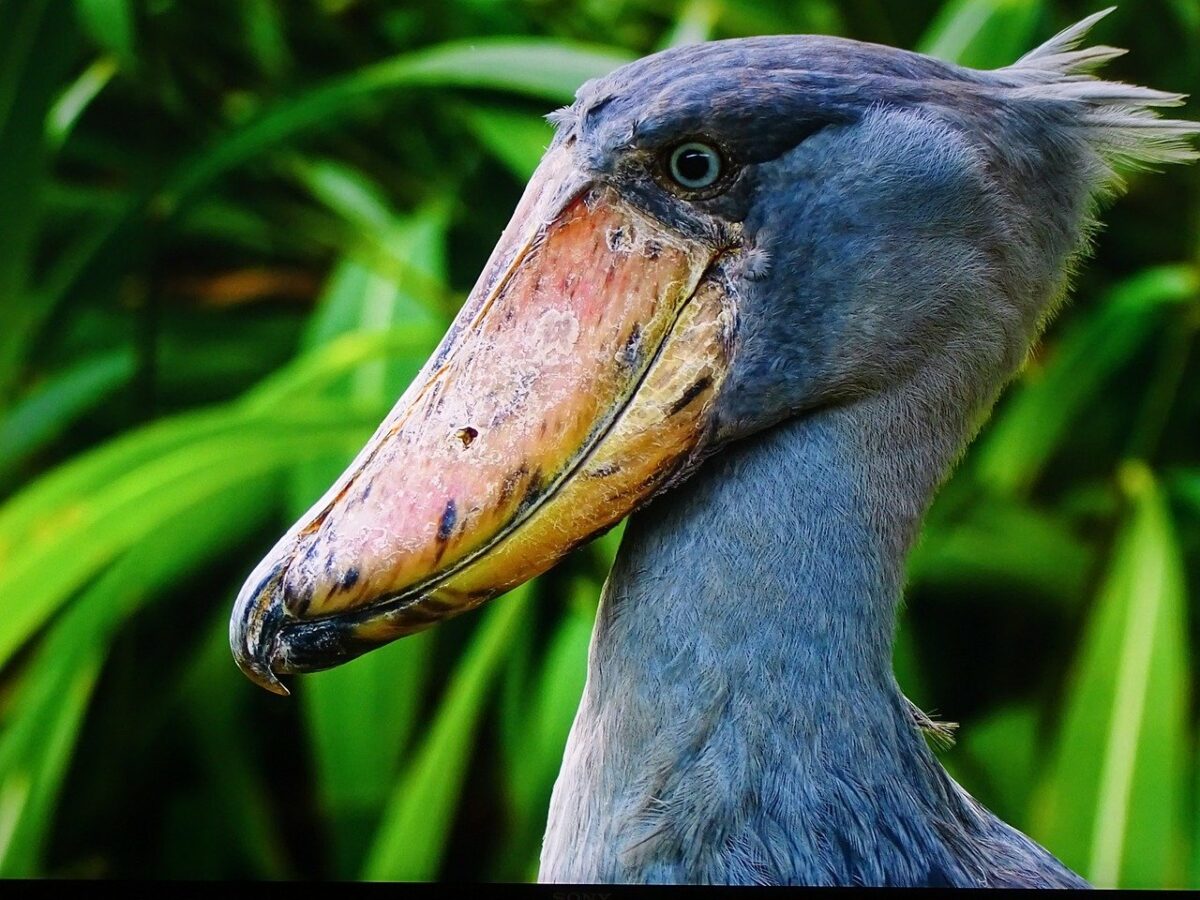
The shoebill stork is a fascinating bird species known for its unique appearance and impressive size. However, its unusual diet sets the shoebill apart from other birds, which includes prey much larger than other birds typically consume.
The Shoebill’s Diet
The shoebill stork has a diverse diet that includes fish, snakes, other aquatic animals, rodents, lizards, and frogs. However, what makes the shoebill truly unique is its preference for larger prey, such as crocodiles.
Feeding Habits
The shoebill’s powerful beak and size allow it to tackle large prey items other birds could not handle easily. The shoebill uses its sharp beak to pierce and kill its prey, then tears it apart using its powerful neck muscles. This feeding behavior may seem aggressive, but the shoebill must survive and thrive in its natural habitat – it’s the circle of life!
Adaptations for Feeding
The shoebill stork’s special diet has led to several adaptations in its physical features. For example, the shoebill has a long, powerful beak perfectly designed for capturing and killing its prey. Additionally, the shoebill’s neck muscles are incredibly strong, allowing it to tear apart large prey items like crocodiles easily.
As a vulnerable species, we must continue to learn more about the shoebill. Let’s take steps to protect it for future generations to enjoy this incredible bird!
How Does the Shoebill Catch Its Prey?
Hunting for bigger animals, such as crocodiles, is difficult, but the shoebill has developed quite a sophisticated technique for catching them.
- The strategy involves stealthily stalking their prey until they are close enough to strike with their sharp beaks.
- They often wait in shallow water, watching intently before hitting quickly at unsuspecting victims.
- The combination of patience and precision allows the shoebills to kill their prey instantly. Meanwhile, it also escaping unscathed from any potential retaliation by the animal they just killed.
- After all that hard work, the shoebills can finally enjoy a well-deserved meal!
Interesting Facts and Findings
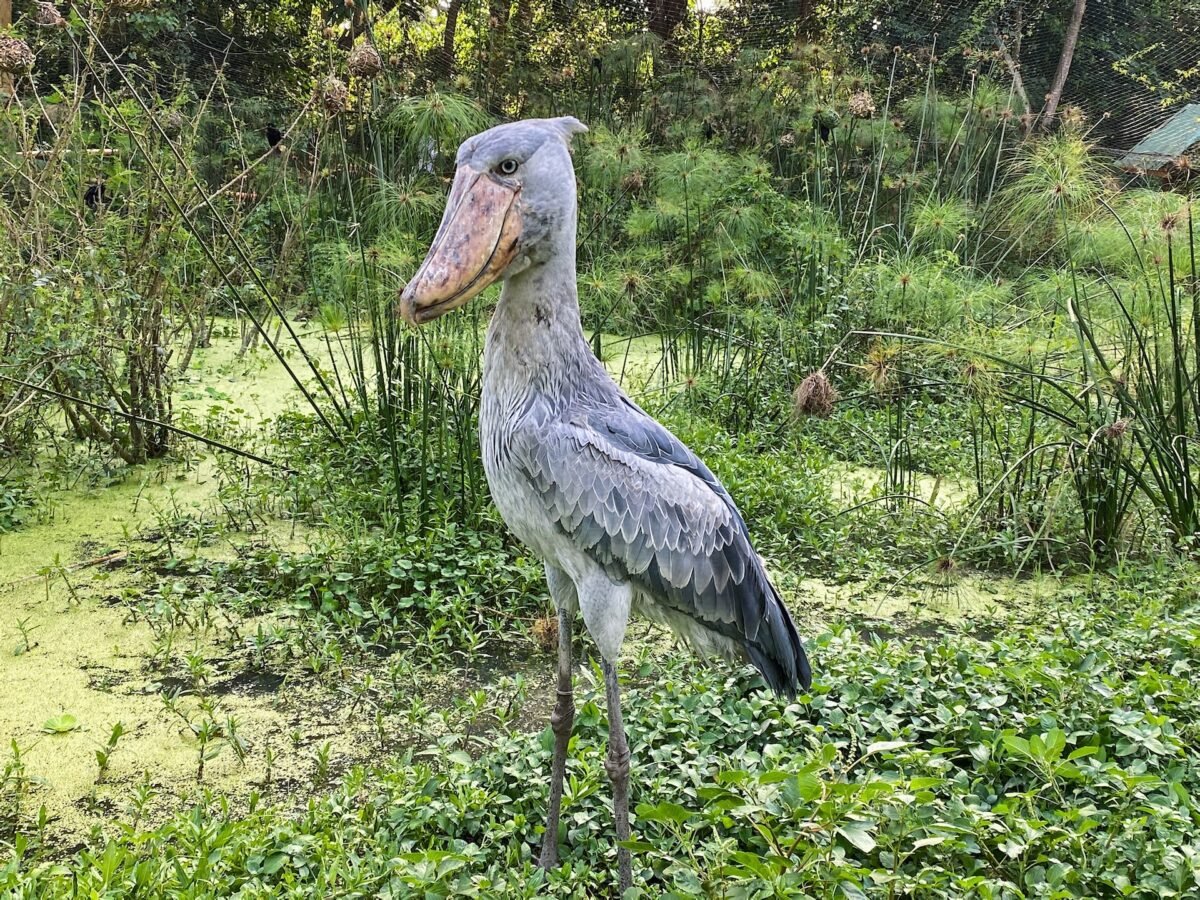
Scientists have studied the shoebill stork for many years and have found a great deal of interesting information about them.
- For starters, they are one of the most powerful predators in nature, in relation to their size, capable of killing their prey with a single bite or thrust of their powerful beaks.
- They typically hunt large fish and small reptiles, such as crocodiles and turtles.
- Also, they have an impressive wingspan reaching 10 feet long, allowing them to soar through the air easily.
- The shoebill stork is renowned for its ability to thrive in some of the most challenging environments on the planet, including swamps and marshes.
- Their intricate feather patterns often allow them to blend seamlessly into their surroundings, further aiding their survival in these harsh habitats.
What Habitats Are Suitable for the Shoebill Stork
- Shoebill storks prefer wetland habitats with plenty of food sources available. These can include shallow lakes, marshes, rivers, reservoirs, and even floodplains full of fish (ideal for hunting.)
- They are also known to inhabit grassy savannas and open woodlands if there is enough water nearby to feed in.
- Additionally, they rely heavily on trees for nesting sites since they build large nests out of sticks and twigs near the tops of tall trees. This protects them from predators while keeping them close to ample food sources below.
Conserving and Protecting This Unique Species
The shoebill stork is an incredible species that require our help for survival due to its vulnerable status in many parts of its range.
Conservation efforts must focus on preserving suitable habitats like wetlands. We have to protect these areas from agricultural development and other human-related activities that threaten their existence.
It’s important to continue monitoring population levels to implement appropriate management plans to protect these magnificent birds from becoming endangered or extinct.
Conclusion
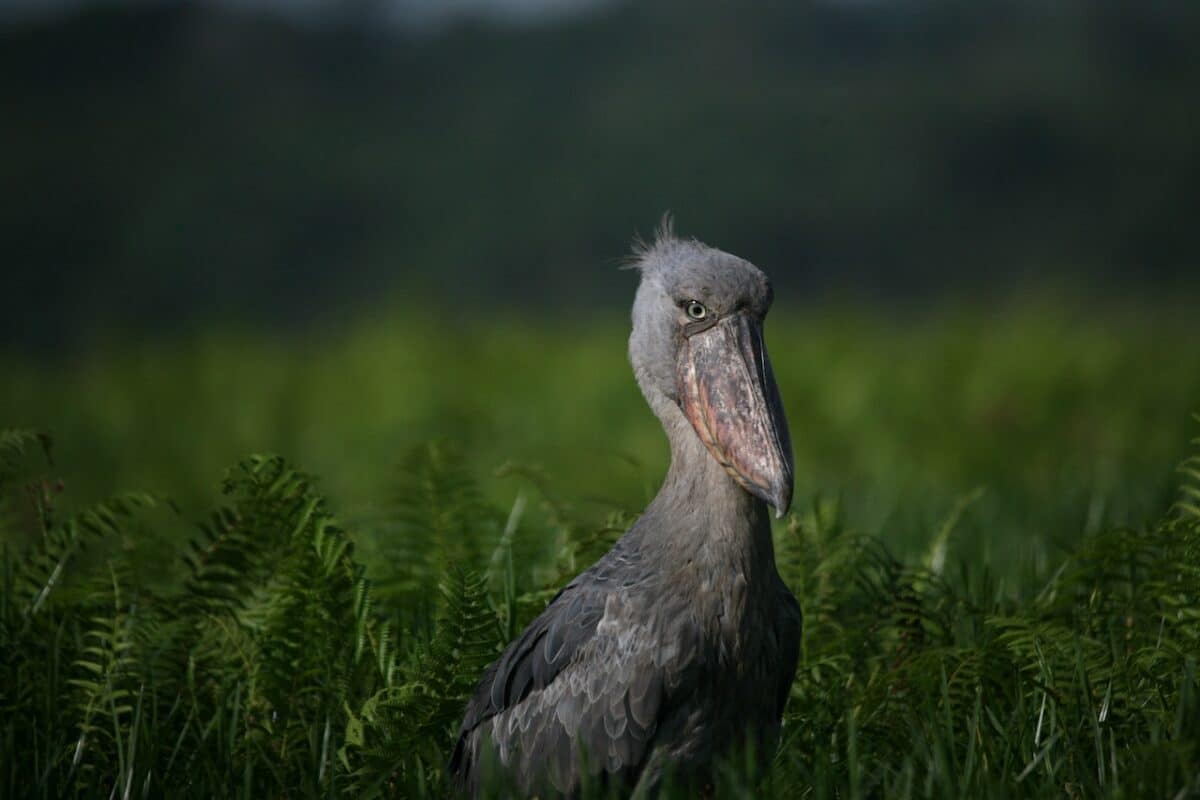
You might never see a shoebill stork eating a whole crocodile or showing off its impressive hunting skills in real life, but one thing is clear: we should respect and admire these powerful predators. They are currently the closest living relative to the pterodactyl, one of the most famous prehistoric creatures.
The skill and strength required to carry out such a feat is awe-inspiring and gives us perspective on what kind of daunting predators once roamed our planet millions of years ago (and still do today.) If you want to experience all this remarkable bird has to offer, check out your local wildlife sanctuary: chances are you’ll catch a glimpse of one in action!
Thank you for reading this article! If you want a closer look at the crocodile read our post on the Alligator Vs. Crocodile.
- Octopus Stuck to Diver’s Back and Won’t Come Off - April 25, 2024
- Magpie Bird Is Reunited with Her Dog Best Friend - April 24, 2024
- Dog Saves Another Dog From Drowning in Fish Pond - April 23, 2024

